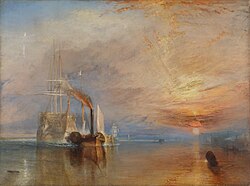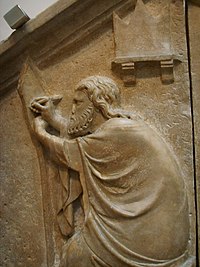Painting

Monalisa
Literally, the term refers to the painting area and the practice of applying a color on a surface such as paper, the canvas on wood, the glass, and the concrete and other materials. In a sense art, the term "painting" means the combination of this activity with the design, composition that is to say that incorporates aesthetic considerations.
In this sense, the painting is the medium for the artist - a painter to represent a personal expression on subjects as varied as there are artists. It is therefore a form of art.
The paint can be naturalistic and figurative or abstract. It can have a narrative content, symbolism, spiritual, or philosophical.
Overview

Portrait of Buddhist Zen Chinese Wuzhun Shifan, painted in 1238 by a Chinese painter.
What characterizes the painting is the perception and representation of intensity. Every point in space has different intensity can be represented by painting in black or white through all shades of gray. In practice, painters can combine shapes by juxtaposing surfaces of different intensity.
The color and tone are the essence of painting, as are the height and pace to the music. Color is highly subjective and psychological effects and meanings of symbols which can differ from one culture to another: the black is associated with mourning in Western countries, whereas in Asia, it is white. Some painters, theoreticians, writers and scientists, including Goethe, Kandinsky and Newton, have written their own color theory. In language, the word denoting a color often includes colors and different tones. Thus, the word "red" can cover a wide range of colors. There is no formal register of different colors, as is the case with the notes of music, although the Pantone system is widely used in the printing industry or graphic.
For a painter, color is not simply divided into primary colors and complementary (such as red, blue, green, brown, etc.). Indeed, he uses pigments enabling it to obtain large varieties of colors. For example, the "blue" for a painter, may be the Cyan, the indigo, the cobalt blue on blue, etc..
The pace is also important in painting as in music. The pace is a break in a set that allows creative force to intervene and add new elements, form, melody, coloration.
Modern artists have greatly expanded the practice of painting to include, for example, collage, which began with Cubism. Other painters incorporate different materials such as sand, the cement, the straw or wood, as did Jean Dubuffet and Anselm Kiefer to name a few. There is a growing community of artists who now use computers to paint on a digital canvas using programs such as Photoshop, Paint, and many others. These images can be printed if necessary on a canvas traditional. (see: digital painting)
In 1829 what appeared the first photography, then from the second half of the nineteenth century, photographic processes improved. As photography became more widespread, painting lost much of its historic role was to present a snapshot of a scene observed. It is in this context that during the twentieth century emerged a new artistic movement like the Impressionists, the Post-Impressionism, the Fauvism, the expressionism, the cubism and Dadaism, which have profoundly changed the perception of world, inherited from the Renaissance.
The modern art and contemporary mark an evolution of the painting, which went from a role traditionally historical documentary than concept.
History of painting
The oldest paintings known to date are in the Chauvet cave in France, and have, according to most historians, about thirty-two thousand years. Carved and painted with the red ocher and dye black, they are mostly hunting scenes with horses, rhinos, lions, buffalo and man. There are other examples of rock art around the world, in France, in Spain, in Portugal, in China, in Australia, etc..
In Western cultures, the oil painting and the watercolor is the medium (paint) the most famous, with rich and complex traditions in the selection of templates and themes. In the East, is the ink or black color that has always prevailed.
Aesthetics and theory of painting
Apelles or the Art of Painting (detail), work painter's Italian Belltower of Giotto (1334 - 1336)
The aesthetic has tried to be the "science of beauty", and it was an important issue for philosophers of the eighteenth and nineteenth centuries as Kant or Hegel. Classical philosophers like Plato and Aristotle also theorized about art and painting in particular. Plato tended to neglect the painters, sculptors and also, in his philosophical approach. He believed that painting could not represent truth, but only one copy of reality and it was a simple job, such as shoemaking or iron work. Instead, Leonardo da Vinci believed that "painting is an intellectual thing. Kant distinguished between Beauty and the sublimation, clearly favoring the latter. Even if this approach was not painting in particular, she was taken by painters like Turner or Caspar David Friedrich.
Hegel, in turn, recognized the impossibility of achieving the concept of universal beauty and, in his essay on aesthetics lessons, he wrote that painting is one of three romantic arts, with poetry and music, because of its symbolic role and its intellectual dimension.
Among the painters who have written theoretical works on painting, we must mention first Leonardo da Vinci (Trattato della pittura), Eugène Delacroix and, in the twentieth century, Salvador Dali, Paul Klee, Jean Monneret and Kandinsky. The latter believed that the painting was a spiritual value, and he connected the primary colors to essential feelings or concepts.
The iconography was also attached to theorize painting. The creator of this discipline, Jean-Pierre Alaux, tried to analyze the visual symbols in their cultural dimension, religious, social and philosophical to achieve a better understanding of the symbolic activity of mankind.
Different types of paint
In the manufacturing process

An oil of Turner
There are different types of paint that is usually identified with agglutinating or binder used to make (whether water-based paint, oil or gasoline).
These include:
• the watercolor
• the wash (ink)
• the gouache
• the acrylic
• the paint with wax
• the distemper
• the oil painting
• the pastels
• the tempera
• the Cerra-colla
• The paint spray or spray paint.
• The airbrush and spray paint
In art
For painting, the artists have developed many techniques and special tools to extend the colors on different media to paint. These tools can be industrially manufactured or manual, or simply to reduce the use of fingers, tissues or any object within their reach.
• paint stencil
• the pictorial composition
• painting in transparency
• the flat area which is to apply a uniform colored field
• liquid paint, using a fluidized painting using medium or water, giving the effects associated
• painting by brushing of putting paint on a brush-brush or cloth that is rubbed on a support to make him lose some of its color for an effect of color fading.
• the spray painting (splash) which consists in projecting the paint on the canvas away, like the dripping
• paint by scraping or scarification which allows using an abrasive or cutting tool, to collect the material, the medium and to update the lower or the same medium, which may very well be contested hole.
• painting by iridescent
• paint the mural
• paint knife
Some artists have gone even further by developing a technique of painting with their whole body, then rolling on the canvas.
Movements in painting designate the different elements, visual techniques and methods that characterize the work of an artist. A painter may be part of a movement or because it is consciously involved, or because art historians have placed in this category.
Through the centuries, many movements have emerged:
Lyrical Abstraction
Abstract Art
Art Brut
Contemporary Art
Art Deco
Informal Art
Naive Art
Baroque
Cobra
Color Field
Constructivism
Cubism
Dadaism
Expressionism
Abstract Expressionism
Fauvism
Figuration Libre
Folk Art
Graffiti
Impressionism
Mannerism
Minimalism
Modernismo
Neoclassicism
Op Art
Orientalism
Orphism
Muralisme
Photorealism
Pointillism
Pop Art
Post-Impressionism
Postmodernism
Realism
Romance
Soviet Socialist Realism
Stuckism
Surrealism
Tachism
Major themes in painting

Bonaparte at the bridge of Arcola, by Antoine-Jean Gros, (ca. 1801), Musée du Louvre.
In painting, as in other art forms, there are themes recurring:
• the portrait and the portrait
• the stills and vanities
• the trompe-l'oeil
• the Nu
• the animal portrait
• the calligraphic painting
• the landscape and marine painting
• the history painting and genre painting
• the painting religious and secular painting or mythological
• the illumination and miniature
